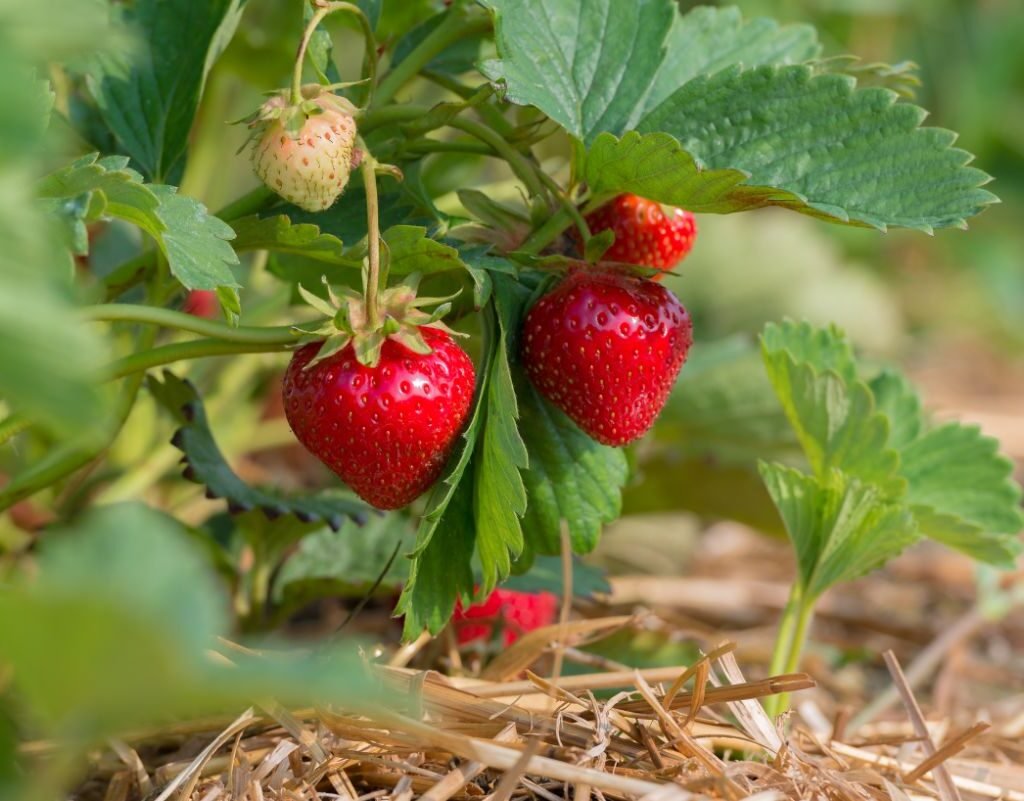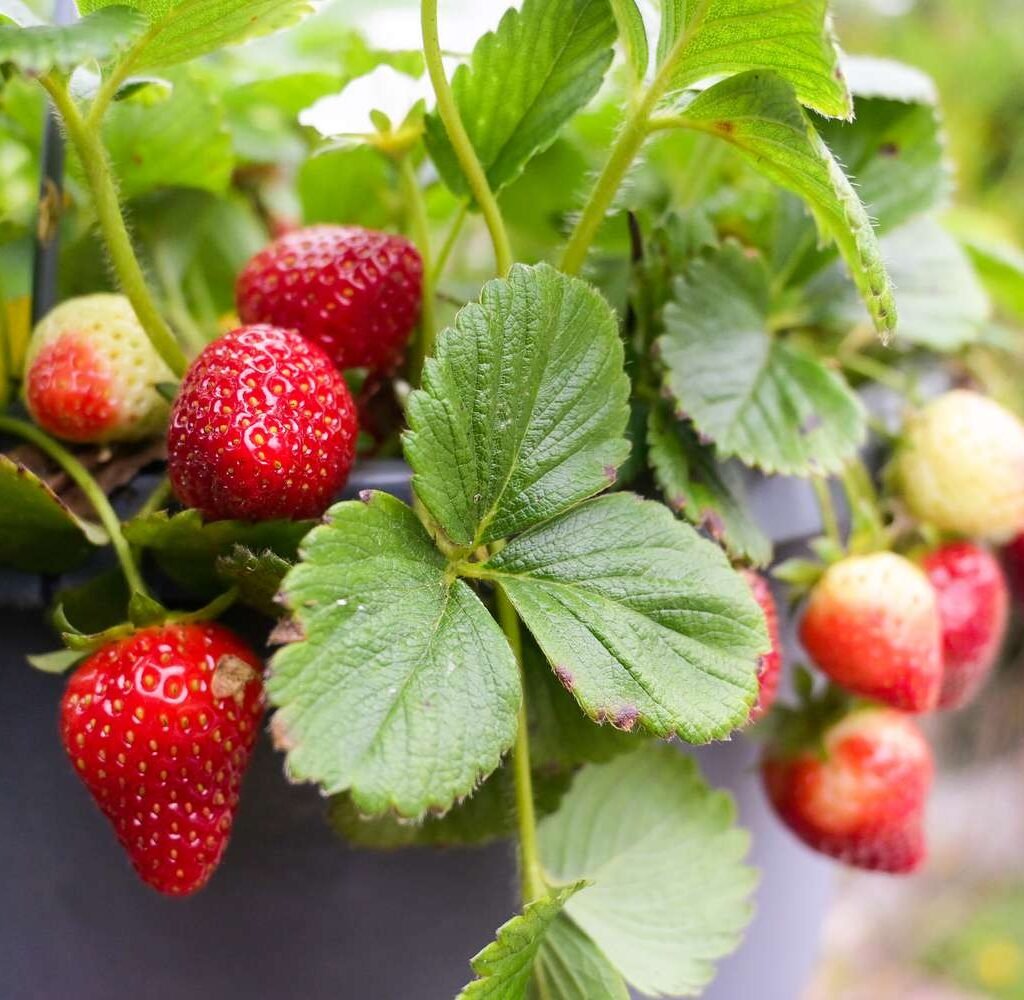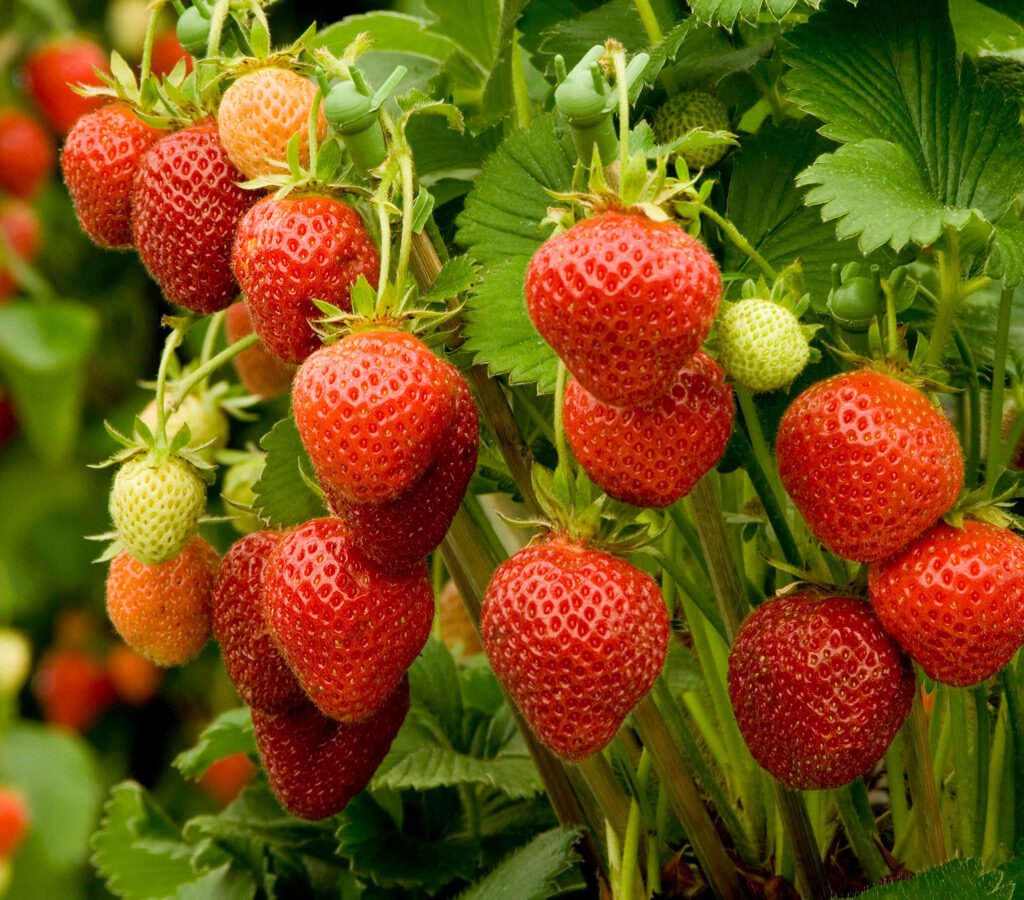Few fruits capture the taste of summer quite like strawberries. Sweet, juicy, and fragrant, they are a favorite in gardens and kitchens alike. The good news is that strawberries are not only delicious but also relatively easy to grow at home. With proper care, you can enjoy a continuous supply of berries throughout the season instead of a single short harvest.
This guide reveals the secrets to growing strawberries successfully, covering everything from choosing the right variety and preparing the soil to planting, caring, and harvesting for ongoing crops.
Understanding Strawberry Types

To achieve continuous crops, it’s essential to know the three main types of strawberries:
- June-bearing strawberries
- Produce one large harvest in late spring to early summer.
- Best if you want a big batch for preserving, freezing, or jam-making.
- Ever-bearing strawberries
- Produce two smaller harvests: one in early summer and another in late summer or fall.
- Great for gardeners who want strawberries spread across the season.
- Day-neutral strawberries
- Produce berries continuously throughout the growing season, as long as conditions are right.
- Ideal for those who want a steady supply of fresh fruit.
For continuous crops, combine day-neutral and ever-bearing varieties in your garden. June-bearing types can also be added for one big flush of berries.
Preparing the Soil

Strawberries thrive in rich, well-drained soil with plenty of organic matter.
- pH: Slightly acidic, between 5.5–6.5.
- Drainage: Essential—waterlogged soil leads to root rot. Raised beds are perfect for strawberries.
- Soil prep: Work in compost or aged manure before planting to improve fertility.
Tip: Rotate strawberries to a new patch every 3–4 years to avoid soil-borne diseases like verticillium wilt.
Planting Strawberries
When to Plant
- Spring: In most regions, plant as soon as soil can be worked.
- Fall: In warmer climates, fall planting gives plants time to establish before winter.
How to Plant
- Space plants 12–18 inches apart in rows about 3–4 feet apart.
- Set the crown (where leaves meet roots) at soil level—too deep can rot, too shallow can dry out.
- Water well after planting.
Pro Tip: Remove flowers from first-year plants of June-bearers. This allows roots and runners to establish, leading to stronger crops in future years.
Supporting Continuous Crops
The key to ongoing harvests is staggered planting, proper care, and variety selection.
- Mix varieties: Plant June-bearing for one big harvest and day-neutral/ever-bearing for steady production.
- Succession planting: Add new strawberry plants every year to keep your patch young and productive.
- Container gardening: Grow strawberries in pots or hanging baskets to extend harvests into patios and balconies.
Watering and Mulching
- Watering: Strawberries need consistent moisture, especially while fruiting. Aim for 1–1.5 inches of water per week. Use drip irrigation to keep foliage dry and prevent disease.
- Mulching: A 2–3 inch layer of straw, pine needles, or shredded leaves conserves moisture, suppresses weeds, and keeps berries clean.
Fertilizing for Sweet Harvests

Fertilization plays a big role in berry size and sweetness.
- Spring: Apply a balanced fertilizer (10-10-10) when new growth begins.
- After harvest: Feed again to help plants recover and prepare for the next cycle.
- Day-neutral plants: Fertilize lightly every 4–6 weeks during the growing season for continuous production.
Avoid over-fertilizing with nitrogen, which promotes leafy growth at the expense of fruit.
Managing Runners
Strawberries reproduce by sending out runners—long stems that form baby plants.
- June-bearing types: Allow runners to root to expand your patch.
- Ever-bearing and day-neutral types: Remove most runners to encourage energy for fruiting.
Hack: Peg down runners you want to root into small pots, then transplant them to refresh your patch or grow in new spots.
Pruning and Maintenance

- Remove old, diseased, or yellowing leaves regularly to improve airflow.
- After harvest, mow down June-bearing plants to just above the crowns. This rejuvenates them for the next season.
- Thin overcrowded areas to reduce competition and disease.
Protecting Strawberries from Pests and Diseases
Strawberries attract pests and are prone to fungal issues if not properly managed.

- Common pests:
- Slugs and snails – use copper tape or beer traps.
- Aphids – control with neem oil or insecticidal soap.
- Birds – cover plants with netting.
- Diseases:
- Gray mold (Botrytis) – prevent with good air circulation and by keeping berries off wet soil.
- Powdery mildew – avoid overhead watering and prune for airflow.
Crop rotation and clean gardening practices go a long way in preventing problems.
Extending the Harvest Season
To keep strawberries coming longer:
- Row covers – Protect plants from late spring frosts and extend the season into fall.
- Greenhouses or polytunnels – Allow for near year-round production in some climates.
- Container growing indoors – With grow lights, day-neutral varieties can produce berries even in winter.
Harvesting Strawberries
- Timing: Harvest when berries are fully red and slightly soft. Strawberries do not ripen after being picked.
- Frequency: Check plants every 1–2 days during peak season.
- Technique: Pinch stems above the fruit instead of pulling to avoid damaging the plant.
Fresh strawberries are fragile and should be handled gently.
Storing and Preserving Strawberries
- Fresh storage: Keep in the refrigerator and consume within 2–3 days.
- Freezing: Freeze berries on trays before transferring to bags to avoid clumping.
- Preserving: Strawberries are perfect for jams, jellies, and syrups.
- Drying: Dehydrate for long-term storage and snack use.
Secrets for Sweetness
- Plenty of sun – At least 6–8 hours daily. More sun means sweeter berries.
- Consistent watering – Stress leads to smaller, less flavorful fruit.
- Mulching with straw – Keeps berries clean and reduces mold.
- Regular feeding – Balanced nutrients support ongoing crops.
- Fresh plants – Replace every 3–4 years for peak sweetness and yield.
Conclusion
Growing strawberries is one of the most rewarding gardening experiences. By choosing the right mix of varieties, preparing rich soil, and maintaining steady care with watering, fertilizing, and pruning, you can achieve sweet, continuous crops throughout the season. With a little planning—like succession planting and protecting against pests—you’ll enjoy baskets of juicy strawberries year after year.
Strawberries may be small fruits, but they bring big rewards. Whether eaten fresh, baked into desserts, or preserved for winter, the joy of harvesting your own homegrown strawberries is unmatched.




